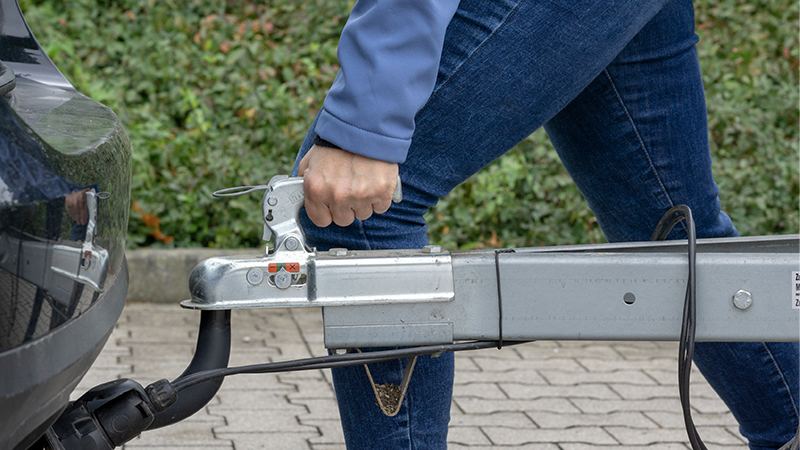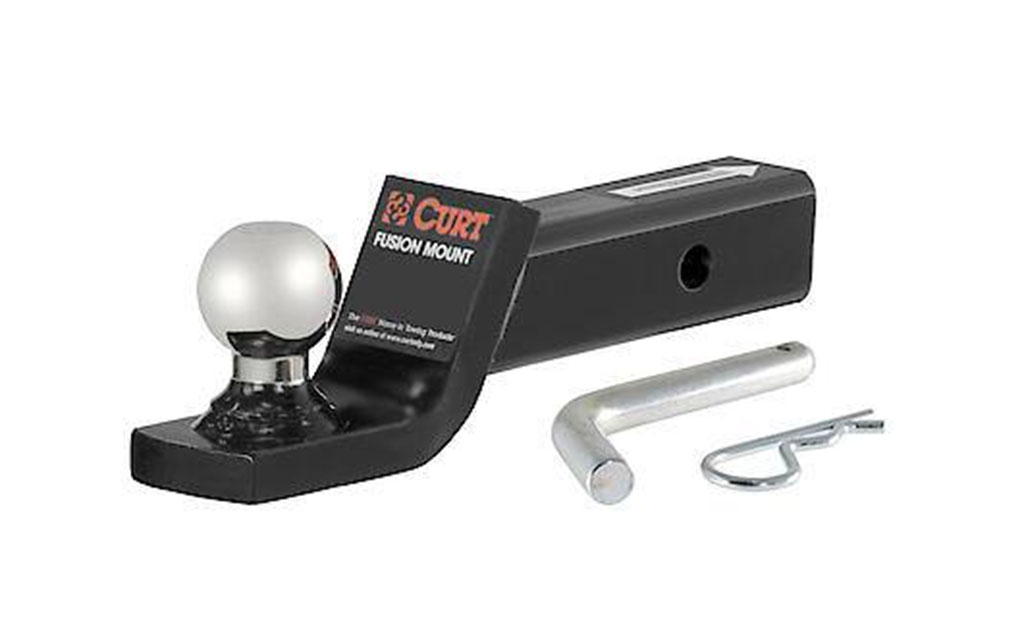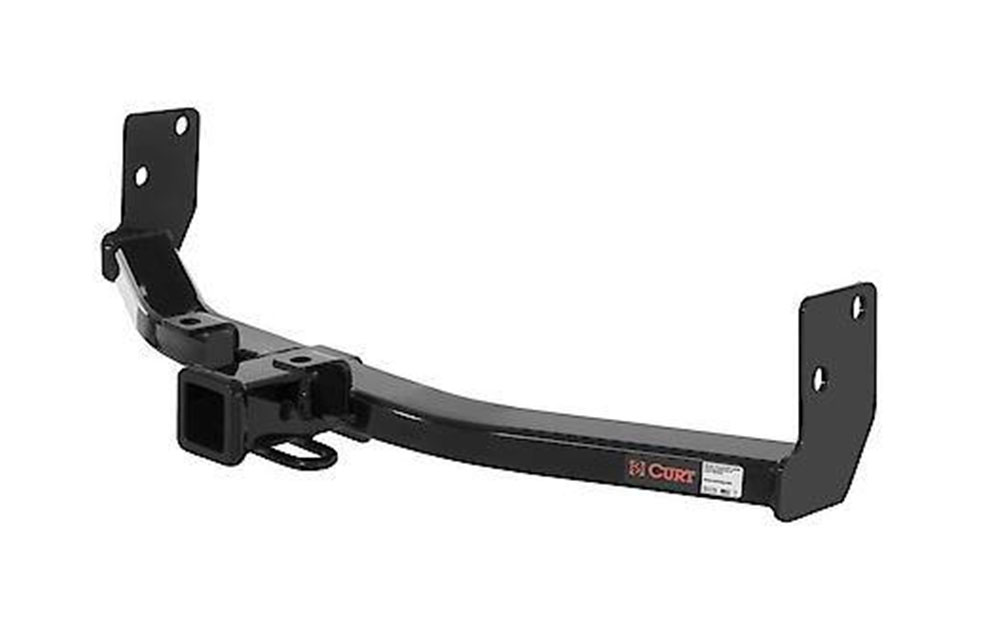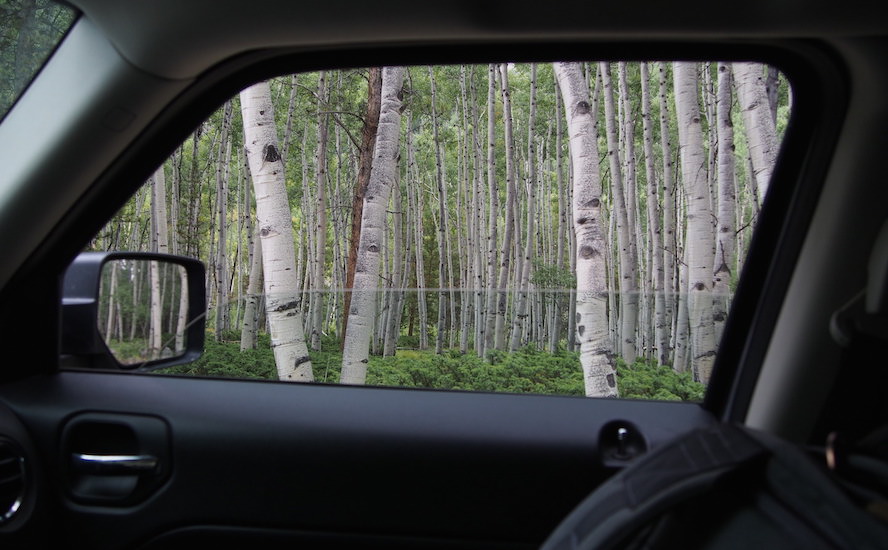Some of the most fun you can have involves hitching up a trailer and driving off into the sunset. Hauling a trailer isn't for the faint of heart though. It pays to be prepared. Whether you're heading to the lake or hitting the dirt track or heading off to the job site, here are our trailer towing tips so you can tow like a pro.
Towing Terms
Determining the weight of your vehicle, trailer, and cargo and matching those with the towing specs for your vehicle can be confusing. But here are the basics.
Tow Rating
First, you need to know the manufacturer's recommended tow rating for your vehicle. Towing capacity for the same model may vary by engine size and axle ratio. To use a 2020 Toyota Tundra as an example, has tow ratings of both 9,400 lb and 10,100 lb. So check your owner’s manual or consult your manufacturer's website for specific towing specs. NEVER exceed your vehicle's maximum towing limits. When exceeded, it’s more likely that you’ll damage your vehicle and/or get into an accident.
GVWR (gross vehicle weight rating)
Your vehicle and your trailer each has a gross vehicle weight rating or GVWR. This is the maximum permissible weight of the vehicle or trailer when fully loaded for travel. This includes the base weight of the vehicle or trailer itself, and any fluids, cargo, driver and passengers, optional equipment, and accessories. The GVWR for the same 2020 Toyota Tundra is 6,900 to 7,000 lbs. You should be able to find the GVWR on your driver's side door sticker.
GTWR (gross trailer weight rating)
To find your GTW, look for a metal tag located on the trailer frame. The GTW number indicates the allowable weight of the trailer and cargo.
GCWR (gross combined weight rating)
This rating is the maximum allowable weight of your vehicle and everything in it, as well as the trailer and its contents. To find this rating, consult your owners manual or dealer.
Tongue weight
Tongue weight (also called vertical tow rate or VTR) is the amount of vertical load the trailer places on the vehicle's towing hitch. We'll go into more details about hitches, but for now, read on to learn how to determine your VTR.
Getting hitched
Hitches come in many shapes and sizes. Typically, when someone thinks of a hitch, they think of a ball mount and trailer ball fastened underneath the rear bumper. This style is one of the most common, and it requires a receiver hitch.
Curt Ball Mount | Advance Auto Parts
Essentially, a receiver hitch is a metal apparatus that bolts onto the frame of the tow vehicle, and provides a square tube to accept a ball mount like the one shown above. This provides the direct link to the trailer, shouldering the load of the trailer via its tongue weight. Another benefit of a receiver hitch is that you can change out the mounts depending on what you’re towing. 
Curt Class 3 Multi-Fit Trailer Hitch | Advance Auto Parts
You can optionally add on extra parts to turn a receiver hitch into a weight-distributing hitch (or WD hitch). A WD hitch is so called because it helps spread the tongue weight between the towing vehicle and the trailer.
Curt Weight Distribution Hitch | Advance Auto Parts
When the towing gets serious, there are fifth-wheel hitches, typically used for towing an RV or travel trailer. Installed onto the truck bed, they can handle higher capacities.
How to find the right hitch for your vehicle:
- Use your vehicle year, make and model to find a compatible hitch.
- Look up the gross trailer weight (GTW) of your tow item (remember, that’s the accumulated weight of trailer and contents inside).
- Check the towing capacity of the vehicle and all towing components to make sure it’s safe to tow. Never exceed the lowest-rated towing component.
Factory hitches correspond with the vehicle’s tow rating and capabilities. But if you’re starting from scratch, here are the parameters when choosing a hitch:
- Class I: Designed for trailer- and trailer-content-weights up to 2,000 pounds, usually a bumper mount or combination bumper/frame mount.
- Class II: Always frame-mounted and recommended for total trailer weights up to 3,500 pounds.
- Class III: Most commonly found on full-size light trucks for heavy duty towing up to 5,000 pounds.
- Class IV: Designed for towing trailer weights up to 7,500 pounds. Class IV hitches can handle up to 10,000 pounds of trailer weight with the addition of a weight-distributing system.
Ball mounts
The ball mount slides directly into the hitch receiver on one end and holds the ball on the other end. Using a ball mount with the correct amount of drop or rise will ensure the trailer is level behind the tow vehicle. To measure how much drop or rise is needed for towing hitches, start by measuring the distance from the top of the hitch receiver to the ground. Then measure the distance from the top of the inside of the trailer coupler to the ground with the trailer level. Subtract the height of the trailer from the height of the hitch; this is the amount of drop needed in your ball mount. If your trailer is higher than your hitch, subtract the hitch height from the trailer height to find the amount of rise needed in your ball mount.
When buying a ball for your trailer hitch, here are five additional considerations:
- The diameter of the ball must match the diameter of the trailer coupler (usually 1-7/8", 2" or 2 5/16").
- The lift of the ball, which refers to the additional rise given to the ball above the ball mount.
- The diameter of the shank should match the diameter of the hole in the ball mount.
- The length of the shank should show at least two threads through the bottom when the nut is in place.
- The class of the ball; make sure to get a ball that is the same class as your hitch and ball mount.
Other towing accessories
Once you’ve selected the towing hitch, ball mount and ball, you may still need a few more items to finish the job:
- Wiring connectors and converters
- Additional lighting
- A coupler to attach to the trailer tongue
- Receiver locks, pins and clips
- A hitch ball wrench
- A trailer jack
- Brake controls (optional based upon trailer load size)
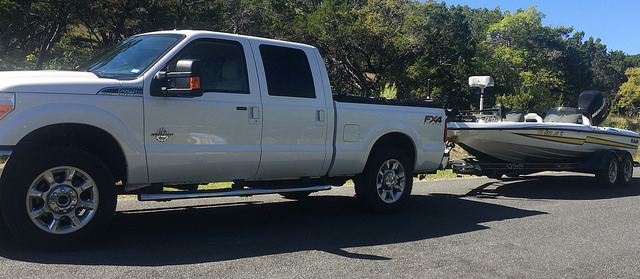
Source | DiamondBack Truck Covers/Flickr
Hooking up
Regardless of whether your first towing experience involves a U-Haul box on wheels or pulling a boat or snowmobile on a trailer, the steps for basic jobs are pretty much the same. After checking your vehicle’s towing capacity and hitch weight rating for compatibility, you will then:
- Back up the tow vehicle so the hitch ball lines up with the coupler on the trailer.
- Lower the coupler until it completely covers the hitch ball.
- Close the latch and insert the retaining pin.
- Cross the trailer’s right safety chain under the tongue and connect to the left side of the tow vehicle’s hitch (making sure there is enough, but not too much, slack for turning around corners), and repeat the process with the opposite chain.
- Plug in the lighting—which leads us to…
Get electrical
Before you get out there on the main roads, there is a legal requirement to have the built-in lights (tail, brake and turn signals) on a trailer working in tandem with those on the tow vehicle. This will allow you to avoid trouble with law enforcement and help communicate your actions to other drivers for safety reasons.
Some newer vehicles come with a plug-and-play connector to accept the wiring harness from the trailer, while others may need a more custom approach. Again, we sell a variety of kits, and a quick conversation with a Team Member may be all you need to get the job done.
Drive mindfully
Piloting any automobile with a big payload at the rear requires some extra-careful attention on the road. Here are a few tips for managing a larger load:
- Do everything more slowly than normal, such as making turns or changing lanes, and ensure there’s enough room to maneuver.
- Coming to a stop will take more time, so allow for that at lights and stop signs.
- Hills can be tricky—climbing steep inclines may be more difficult, so if that’s the case, pull to the right and flash your hazards to alert other drivers. Shifting down a gear and using the engine to help brake can make descents easier.
Parting words on maintenance
If you plan to modify your towing vehicle to give it extra power or additional safety features, check to make sure you aren't voiding your warranty. Also note that, even if you increase your engine’s power, this does not increase the maximum amount that can be safely towed by a particular vehicle.
You should also be aware that towing with your vehicle may qualify you for the severe maintenance plan. Follow the guidelines carefully in your owner's manual. You'll need to check and replace some of your vehicle's fluids like motor oil and transmission fluids as well as other components like brakes more frequently than is typical. You may even want to add a transmission cooler or increase the size of the stock cooler. Your maintenance costs will increase, but you'll prolong the life of your vehicle and lower your risk for getting stranded on the side of the road.
So there you have it—the basics of towing. Leave us a comment to share your tips and towing stories.
